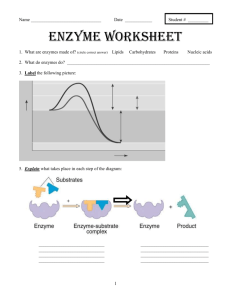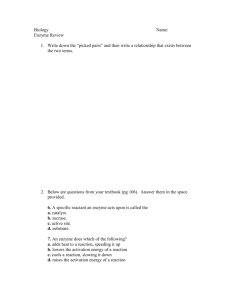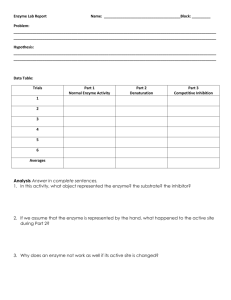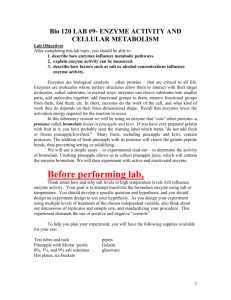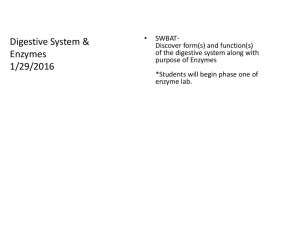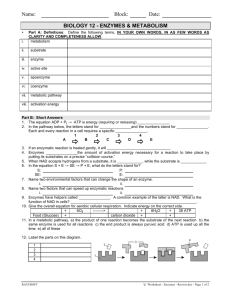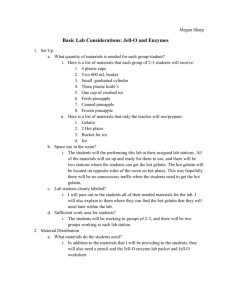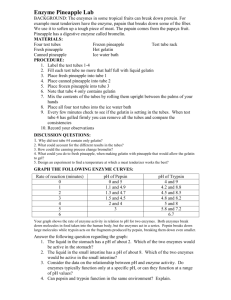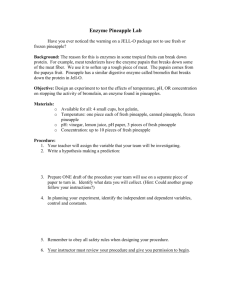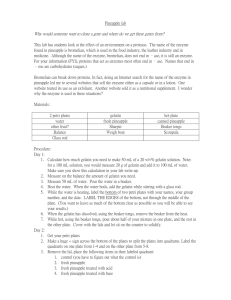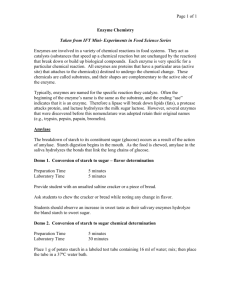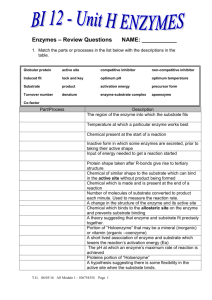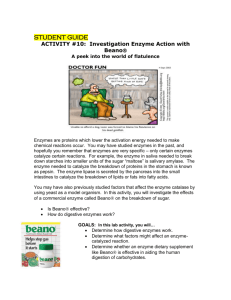The Enzyme Lab
advertisement
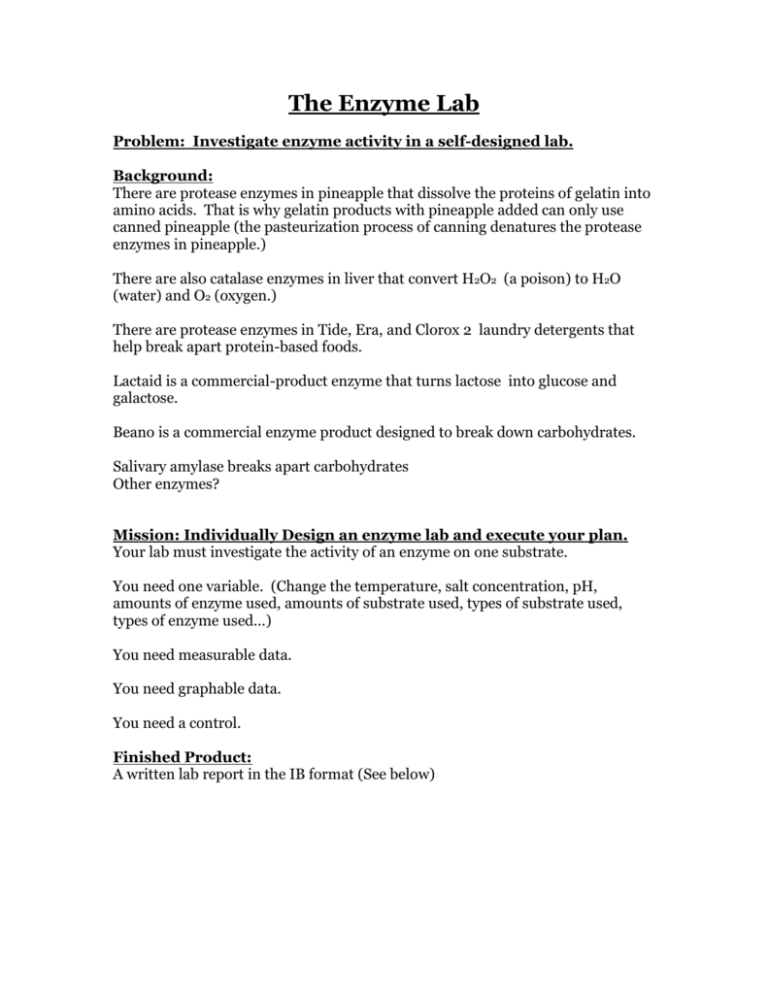
The Enzyme Lab Problem: Investigate enzyme activity in a self-designed lab. Background: There are protease enzymes in pineapple that dissolve the proteins of gelatin into amino acids. That is why gelatin products with pineapple added can only use canned pineapple (the pasteurization process of canning denatures the protease enzymes in pineapple.) There are also catalase enzymes in liver that convert H2O2 (a poison) to H2O (water) and O2 (oxygen.) There are protease enzymes in Tide, Era, and Clorox 2 laundry detergents that help break apart protein-based foods. Lactaid is a commercial-product enzyme that turns lactose into glucose and galactose. Beano is a commercial enzyme product designed to break down carbohydrates. Salivary amylase breaks apart carbohydrates Other enzymes? Mission: Individually Design an enzyme lab and execute your plan. Your lab must investigate the activity of an enzyme on one substrate. You need one variable. (Change the temperature, salt concentration, pH, amounts of enzyme used, amounts of substrate used, types of substrate used, types of enzyme used…) You need measurable data. You need graphable data. You need a control. Finished Product: A written lab report in the IB format (See below) All students should be familiar with the requirements for IA. It should be made clear to them that they are entirely responsible for their own work. It is helpful if teachers encourage students to develop a sense of responsibility for their own learning so that they accept a degree of ownership and take pride in their own work. In responding to specific questions from students concerning investigations, teachers should (where appropriate) guide students into more productive routes of inquiry rather than respond with a direct answer. As part of the learning process, teachers can give general advice to students on a first draft of their work for IA. However, constant drafting and redrafting is not allowed and the next version handed to the teacher after the first draft must be the final one. This is marked by the teacher using the IA criteria. It is useful to annotate this work with the levels awarded for each aspect—“c” for complete, “p” for partial and “n” for not at all, to assist the moderator should the work be selected as part of the sample. In assessing student work using the IA criteria, teachers should only mark and annotate the final draft. When completing an investigation outside the classroom, students should work independently. Teachers are required to ensure that work submitted is the student’s own. If any doubt exists, authenticity may be checked by one or more of the following methods. • Discussion with the student • Asking the student to explain the methods used and to summarize the results • Asking the student to repeat the investigation Teachers are required to sign the IA coversheet to confirm that the work of each student is his or her own unaided work. For the write up you need: 1. Introduction 2. Materials/Methods 3. Data table Your lab will be evaluated for IB internal assessment.

